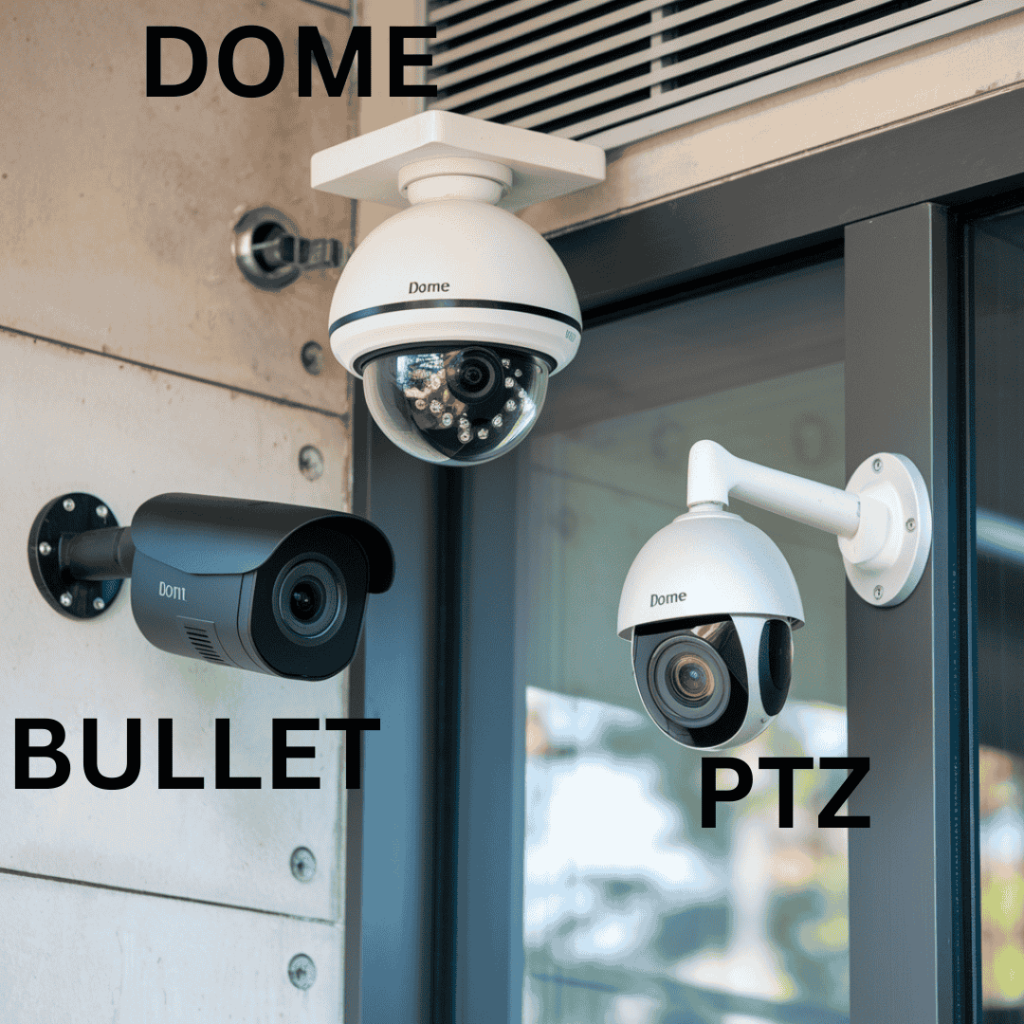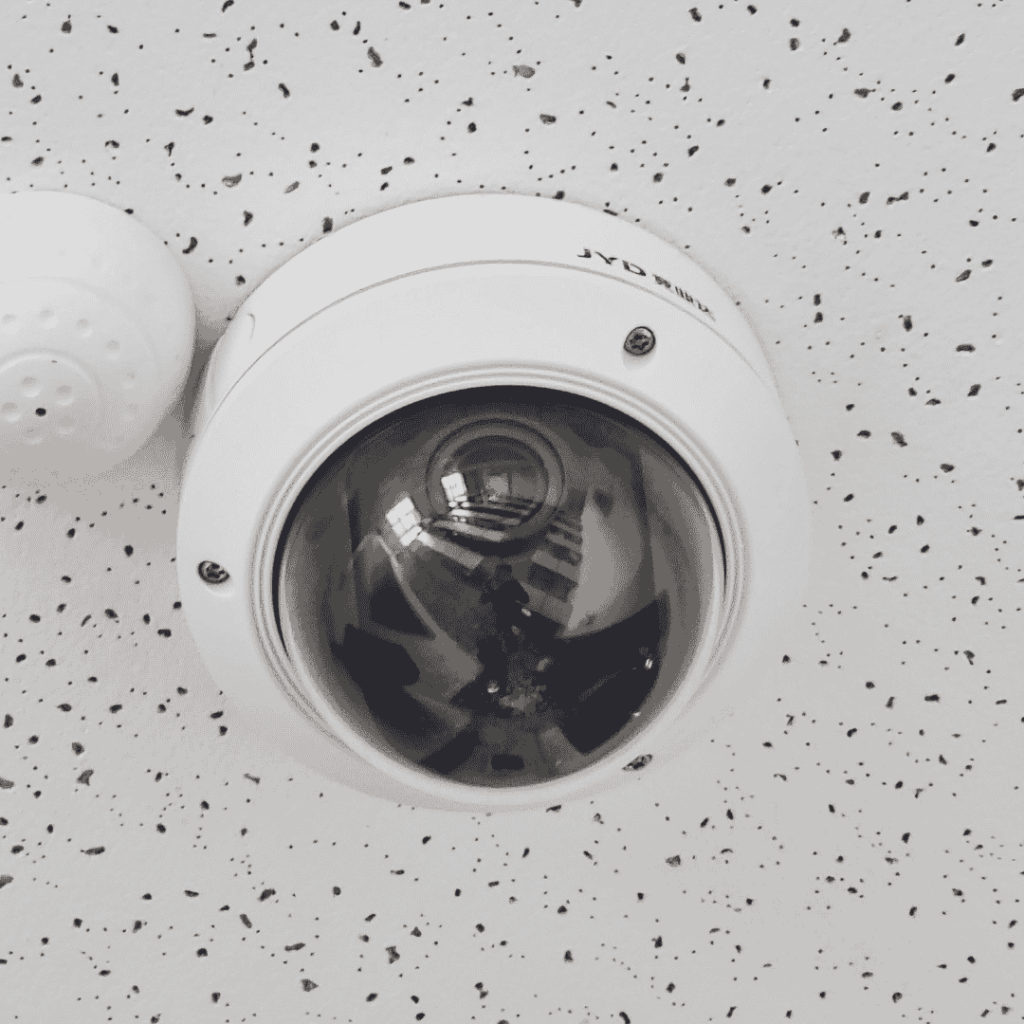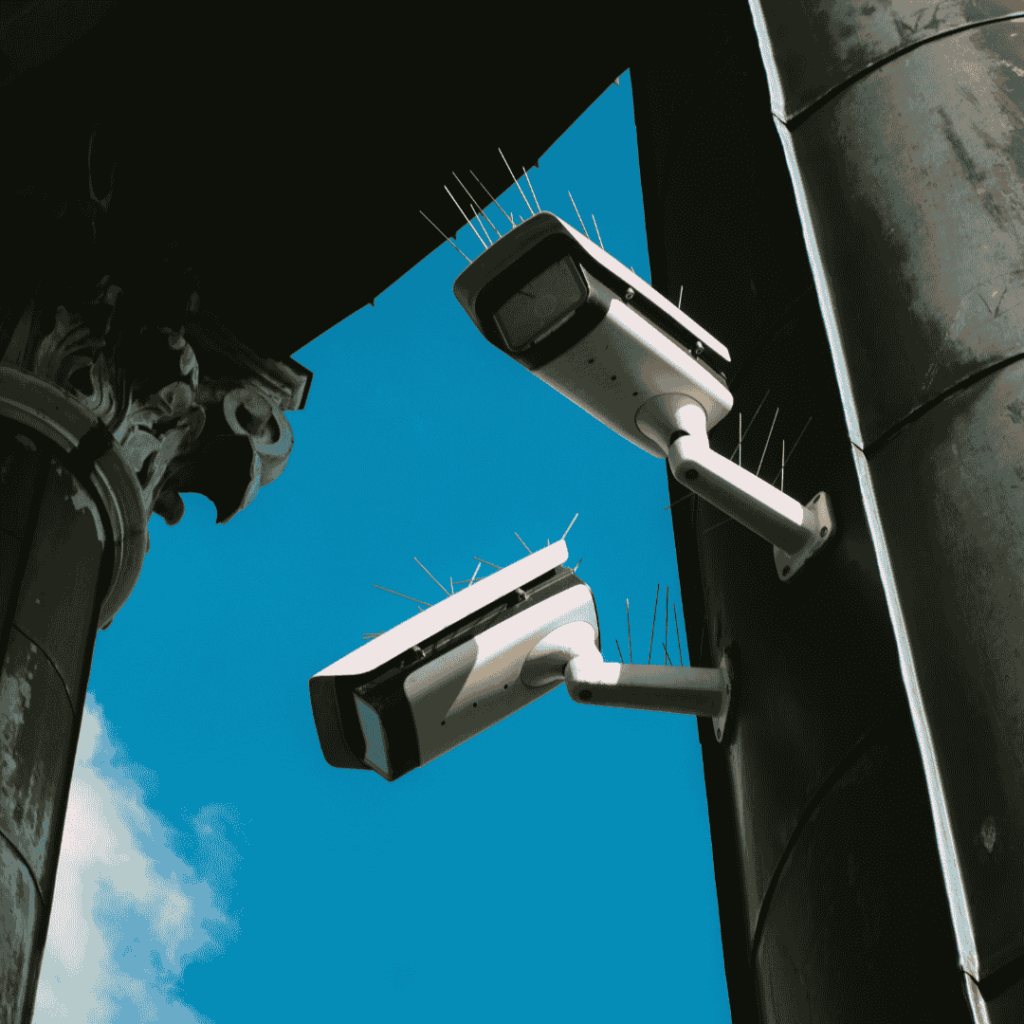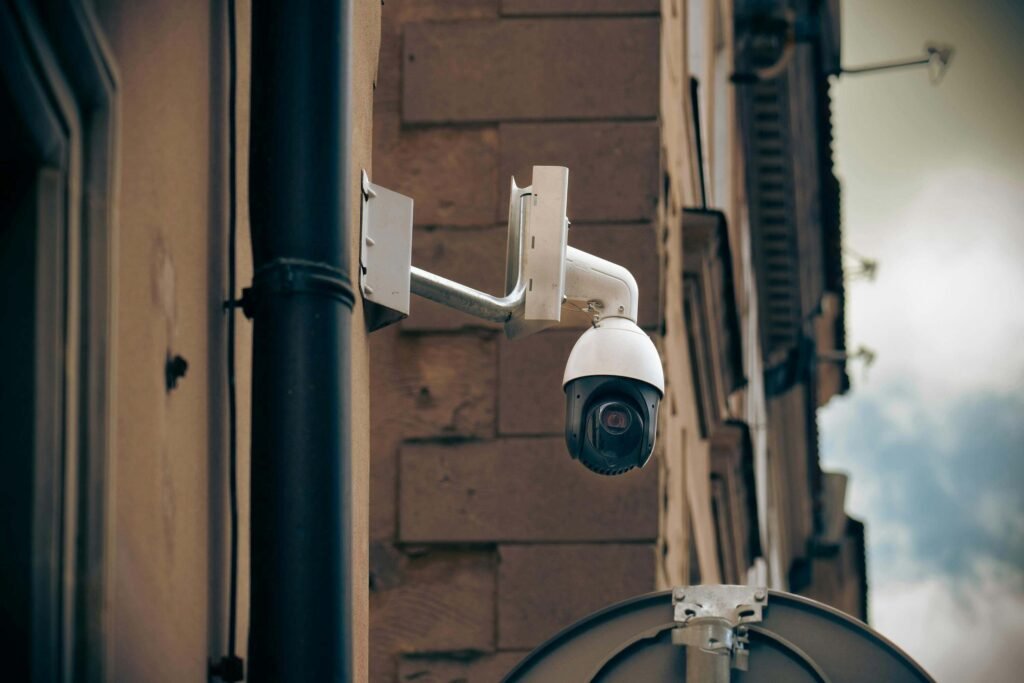Identifying the right type of CCTV camera can be challenging, as new models are constantly being developed. However, based on my study and real-world usage, I’ve found that Dome, Bullet, PTZ, and Wireless security cameras are the most commonly used and trusted options for home and business protection.
Today, the number of CCTV camera types is vast and constantly growing, It is difficult to prove the number of types of CCTV cameras in the world because CCTV brands are constantly competing with each other to meet the security needs of the world and maintain their positions in the developed world.
Different types of CCTV cameras are constantly being invented, I can give you important and basic ideas based on some sources and features, design and functionality of CCTV cameras and some manufacturers CCTV companies and popular trending CCTV camera brands such as Hikvision, Dahua, axis, And Bosch CCTV Types depending on the main categories like:
- Dome
- Bullet
- PTZ

But many more brands are running with the needs of customers and the needs of the developed world
Types of CCTV Security Cameras in The World
The classification of CCTV cameras is based on industry standards, manufacturer guidelines, and expert recommendations. Leading brands like Hikvision, Dahua, and Axis categorize their cameras into types such as Dome, Bullet, and PTZ. Security blogs like SafeWise and platforms like IPVM also explain these categories to help users choose the right camera for their needs.
Standards organizations like ONVIF and the Security Industry Association (SIA) provide guidelines for CCTV systems, supporting these widely accepted classifications. While there’s no fixed number of CCTV camera types worldwide, most are grouped into 12–15 main categories based on design, functionality, and purpose. These types help users select the right cameras for different locations and security requirements, including the following:
- Dome Cameras
- Bullet Cameras
- PTZ (Pan-Tilt-Zoom) Cameras
- IP Cameras (Internet Protocol)
- Thermal Cameras
- C-Mount Cameras
- Day/Night Cameras
- Wireless Cameras
- Fisheye Cameras
- Box Cameras
- 360-Degree Cameras
- ANPR/LPR Cameras (License Plate Recognition)
- Infrared/Night Vision Cameras
- HD CCTV Cameras (e.g., HD-TVI, HD-CVI, AHD)
- Hidden/Covert Cameras
There are also some additional types of CCTV cameras based on specific features. For example, cameras can be Indoor or Outdoor, depending on whether they are weatherproof for outdoor use. They can also be classified as Analog or Digital, depending on how they send video signals—older models use analog, while newer ones use digital technology. Some advanced cameras are AI-Powered Smart Cameras, which use artificial intelligence for features like facial recognition and object detection. The exact number of CCTV types is not fixed because technology is always improving. New features like AI, IoT (Internet of Things), and 4K Ultra HD create new categories and hybrid models, making it hard to count all types accurately.
Dome
Dome security cameras have become a popular choice in the world of surveillance since they were first developed. While the exact year they were launched isn’t clear, dome cameras started gaining attention in the 1990s when CCTV technology improved and became easier to use. These cameras are designed to provide security in many places, including indoor spaces like offices and stores, as well as outdoor areas like parking lots and building entrances.

Dome cameras are versatile and can be installed both indoors and outdoors. They are ideal for entry points, busy areas, and spaces needing extra protection against theft or vandalism. Popular for homes, offices, and public areas, they are discreet, provide wide coverage, and often feature 360-degree views. Their dome-shaped design makes them more resistant to damage, and many models include infrared technology for low-light monitoring.
A single dome camera can cover 30–100 feet depending on placement, and they can be mounted on walls or ceilings, offering flexible installation options for homes and businesses.
Bullet
Bullet security cameras are a well-known type of surveillance camera, easily recognized by their long, tube-like shape that looks like a bullet. These cameras are designed to improve security in different places and are often installed in areas where clear and detailed monitoring is needed, like parking lots, schools, and building entrances.
Bullet cameras can be used both indoors and outdoors, making them useful in many situations. They are especially popular for outdoor use because their noticeable shape acts as a warning to potential intruders. People usually place them in busy areas, on the outside of buildings, or along property boundaries where strong surveillance is important.

Compared to other cameras, bullet cameras have some clear advantages. They usually have bigger lenses, which help capture clear details even from far away, making them great for watching large areas. These cameras are in high demand because they work well and are easy to install.
A single bullet camera can monitor a large space, often covering over 100 feet, depending on how it is set up. They are a good choice for both homes and businesses, providing security for all types of properties. You can mount bullet cameras on walls or ceilings, giving you flexibility to place them where they can work best.
PTZ (Pan-Tilt-Zoom)

PTZ (Pan-Tilt-Zoom) security cameras are powerful surveillance cameras that can move side to side, up and down, and zoom in or out. This makes them great for watching large areas like parking lots, stadiums, and public spaces. These cameras work well both indoors and outdoors and are often used in places where flexible and detailed monitoring is important, such as retail stores and event venues.
One big advantage of PTZ cameras is that they can zoom in on specific details while still watching a wide area. This means users can follow moving objects or focus on important spots without needing extra cameras. PTZ cameras are popular because they are very effective and flexible, often covering areas several hundred feet wide, depending on the model and how they are set up.
These cameras are good for both homes and businesses, providing strong security solutions for many types of properties. PTZ cameras can be installed on walls or ceilings, making it easy to place them in the best spot for the job.
IP Cameras (Internet Protocol)
IP cameras are modern surveillance cameras that transmit video over a network, allowing remote viewing and management. First introduced in 1996 with the Axis NetEye 200, they replaced traditional closed-circuit systems and quickly became a key part of smart security solutions.
These cameras are ideal for homes, offices, retail stores, warehouses, and other areas requiring live monitoring. They offer high-resolution video, flexibility, and remote access from anywhere. A single IP camera can cover 30–100 feet or more, depending on placement, and can be mounted on walls or ceilings to suit different security needs.
Thermal security cameras
Thermal cameras detect heat emitted by objects, creating images based on temperature differences. Initially developed in the 1920s, they became widely used in the late 20th century, especially after the 1991 Gulf War, as production increased and costs dropped.
Ideal for indoor and outdoor use, thermal cameras excel in low-visibility conditions such as darkness, smoke, or fog. They are commonly used for border security, military operations, large events, and other critical areas. Unlike regular cameras, thermal cameras detect heat signatures, allowing them to identify people or objects even in complete darkness.
A single thermal camera can cover 100–300 feet depending on its specifications. They are suitable for homes and businesses and can be mounted on walls or ceilings, providing flexible, effective security coverage.
C-Mount Cameras
C-Mount cameras have a boxy design with interchangeable lenses, allowing flexible coverage for different areas. Popular since the late 20th century, they are favored by professionals for high-quality, adjustable surveillance.
Suitable for indoor and outdoor use, C-Mount cameras are ideal for warehouses, parking lots, stores, and other spaces. The lens can be customized to focus on specific areas or provide a wide view. A single camera can cover 30–100+ feet depending on the lens, and they can be mounted on walls or ceilings for optimal placement.
C-Mount security cameras

C-Mount security cameras are unique cameras with a boxy shape that lets you change their lenses. This makes them flexible because you can choose a lens that works best for the area you want to monitor. These cameras first became popular in the late 20th century, especially among professionals who needed high-quality and adjustable surveillance.
C-Mount cameras can be used indoors and outdoors, making them suitable for many places like warehouses, parking lots, and stores. People like these cameras because they can use different lenses to focus on specific areas or cover a wide view, depending on what’s needed.
The demand for C-Mount cameras is steady because they offer clear video and flexible installation options. A single C-Mount camera can monitor areas from 30 to over 100 feet, depending on the lens used. These cameras are a good choice for both homes and businesses, providing reliable security in different environments. They can also be mounted on walls or ceilings, giving you more options for placing them where they’ll work best.
Day/Night Cameras
Day/Night security cameras are made to work well in both bright light and low-light conditions. These cameras usually have a boxy or dome shape and use special technology to switch automatically from color to black-and-white when it gets darker.
They can be used indoors and outdoors, making them perfect for places like parking lots, stores, and homes. People often install them in areas where light changes a lot, like at entrances or in hallways. The main benefit of Day/Night cameras is that they provide clear video even in low light, using features like infrared (IR) lighting and high sensitivity to light.
More people are choosing Day/Night cameras because they offer good security day and night. A single camera can cover a large area, usually between 30 and 100 feet or more, depending on the model. These cameras are great for both homes and businesses, offering flexible options for different needs. You can also mount them on walls or ceilings, making it easy to position them for the best coverage.
Wireless security camera
Wireless security cameras are modern cameras that send video over Wi-Fi, so you don’t need to use a lot of wires. These cameras come in different sizes, from small ones for indoor use to bigger ones for outdoors. They are great for both indoor and outdoor security.
People often choose wireless cameras because they are easy to install. You can set them up quickly without needing to deal with lots of cables. They are commonly used in homes, offices, and shops where flexibility is important. One big advantage is that you can watch live video or recordings on your phone or computer from anywhere, which makes them very convenient.
Wireless cameras are becoming more popular as more people want easy and reliable security. The market for these cameras was worth about $6.63 billion in 2023 and is expected to grow to nearly $15.13 billion by 2030, thanks to better technology and more interest in home and business safety.
A single wireless camera can monitor a large area, usually between 30 and 100 feet or more, depending on the model and where it’s placed. These cameras are perfect for homes and businesses, offering effective security solutions. You can also mount them on walls or ceilings, making it easy to position them where they work best.
